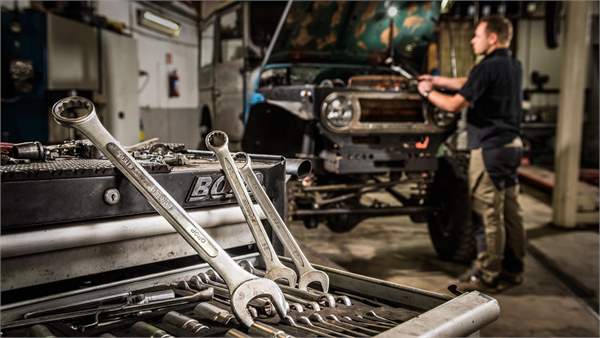Most of us wouldn’t dream of tinkering with our modern daily drivers with their black boxes and throw away serviceable parts, but for those with older vehicles, a passion for motorsport, or with a much loved classic, there can be enjoyment in doing old school repairs, servicing, and restoration. The hobby mechanic can literally spend thousands of dollars equipping their garage with everything from air compressors to vehicle hoists, so this list is by no means exhaustive. It is simply a suggestion of basic essential tools that every older car owner should have hanging on the wall, in a well organised toolbox, or tucked under the workbench.
- Let us start off with that good solid workbench, preferably fitted with a strong vice. There is nothing worse that trying to manhandle a part on the floor when you could be standing up.
- A decent quality socket set with both Metric and Imperial sockets. If your vehicle is Japanese, you will likely need metric, if American or European you will likely need Imperial. If you want to take it up a notch also invest in an impact driver to make removing stubborn nuts/bolts easier.
- A decent set of ring/open ended spanners again in Metric and/or Imperial. An extra 10mm, 13mm, 7/16th, and ½ inch will always come in handy too.
- A good inspection light will help you find your way around those dark engine bays, or a stand-up halogen/LED flood lamp to give some real brightness.
- A trolley jack is a must if you will be removing wheels, and if so, add a pair of axle stands for safety. You should never get under a vehicle supported only on a jack.
- An oil filter wrench if you are going to be doing oil changes. There are lots of different designs out there, and not all fit all filters.
- A can of CRC or WD40 penetrating fluid to ease up those rusted nots and bolts.
- Pliers (both normal and longnose) for pulling out split-pins etc.
- A torque wrench is a must if you are removing major components. Fixings must be tightened to manufacturer’s specifications or you risk them coming loose or causing damage.
- A bag of rags. Cars are dirty and an endless supply of rags for cleaning up is most important.
- A hammer. Sometimes brute force is the only way to shift that stubborn nut.
- A workshop vacuum cleaner. You know what will happen if you are caught using the household vacuum in the garage so invest in a small shop vac. A small vetvac is even better so you can clean up any fluid spills.
- A selection of screwdrivers. Flat and Phillips are the most common, but you may also come across Torx, Hex, and Tri-wing if trying to remove or open parts the manufacturer does not really want you touching. You can find “bit sets” at most DIY stores that have every combination possible.
- Vice Grips. Sometimes old rusted fasteners will not be able to be removed using the correct method. Vice grips give you a chance of using brute force as a last resort.
- Safety gear. Gloves, earmuffs, and goggles will all be needed at some point so make sure they are to hand.
We could go on but where would we stop. Like any hobby, car maintenance and restoration can be as basic or as technical as you want it to be. At the end of the day…enjoy it!

